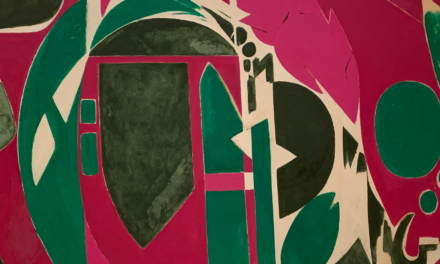It is commonplace to say that he is one of the greatest names in painting in the 20th century. Mark Rothko (1903-1970) committed suicide at the age of 66 and we invariably connect his darkest paintings to the period preceding his death.
‘It’s so easy to tell a dramatic story!’ Arne Glimcher who helms Pace Gallery and has worked with Mark Rothko’s estate since 1978 has decided to redress the common mistake of associating dark with death in Rothko’s work by organising a museum show at his Chelsea gallery. He points out, for instance, that Rothko’s final painting, unfinished at his death, was bright red.
Nothing is on sale.
Thirty-two paintings, a significant number of them from museums such as MoMA in New York, the National Gallery in Washington and the Virginia Museum of Fine Art, in addition to works loaned by his children Kate and Christopher, prove that Rothko’s dark palette goes back to 1955.
It took five years to organise the exhibition that was also made possible through exchanges with multiple institutions.
It’s the must-see exhibition right now in New York. Arne Glimcher is on his tenth Rothko exhibition.
He met the painter in 1965. He says:
It is a pity to have missed 1994’s ‘Mark Rothko, The Last Paintings’ at Pace, comprising entirely of works from 1969 including certain light beige and light grey pieces.
It is also a pity to have missed 1997’s exhibition-dialogue between Bonnard and Rothko whose theme was inspired by a remark from the painter who was particularly fond of the Nabi artist’s palette.
Arne Glimcher analyses the use of colours in Rothko.
The gallerist is amazed that no museum has put on this exhibition for half a century. ‘I love to organise exhibitions that generate ideas,’ he explains.
By way of conclusion, it is worth mentioning an article written by Rothko and published in the catalogue of the Pace Gallery show. In it, he describes his formula for a good painting:
-1There must be a clear preoccupation with death- intimations of mortality…Tragic art, romantic art, etc, deals with the knowledge of death.
-2 Sensuality. Our basis of being concrete about the world. It is a lustful relationship to things that exist.
-3Tension. Either conflict of curbed desire.
-4 Irony. This is a modern ingredient- the self effacement and examination by which a man for an instant can go on to something else.
-5 Wit and play…for the human element.
-6 the ephemeral and chance. for the human element
-7 Hope. 10% to make the tragic concept more endurable.
I measure these ingredients very carefully when I paint a picture. It is always the form that follows these elements and the picture results from the proportions of these elements’.
www.pacegallery.com




